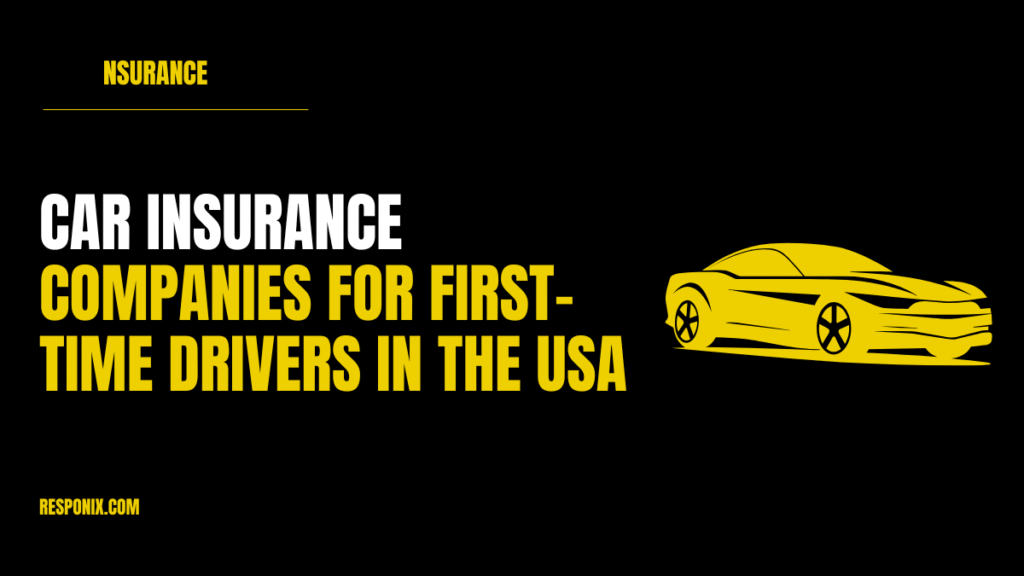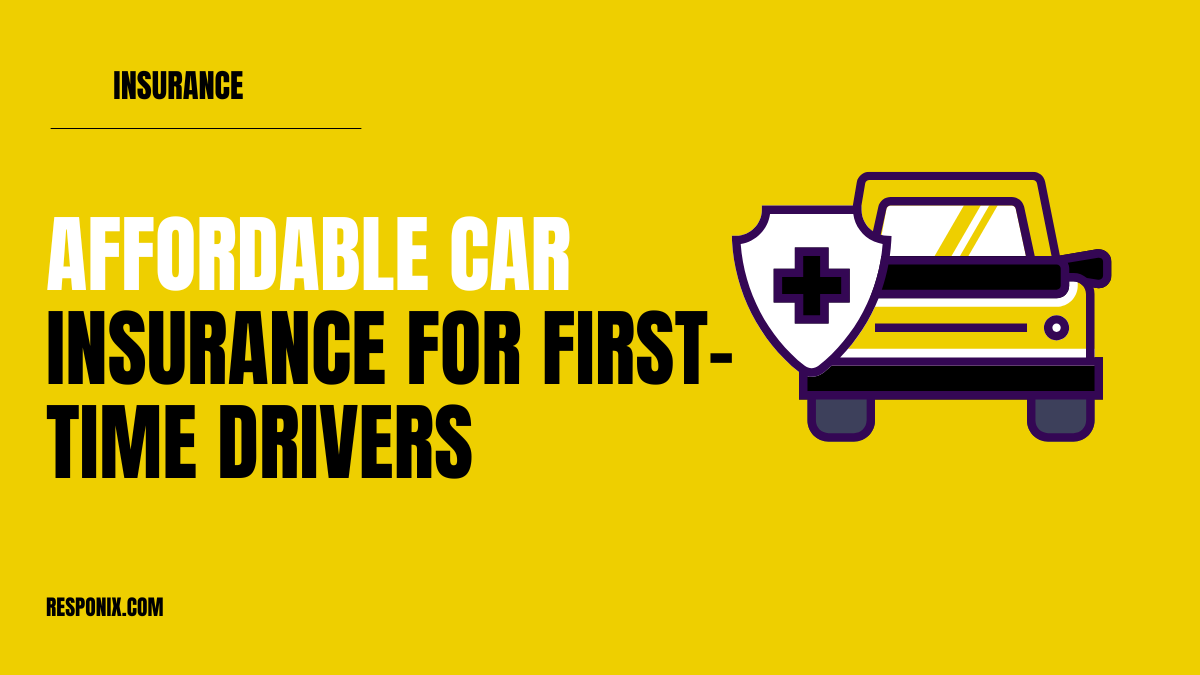Table of Contents
Introduction: Why First-Time Drivers Need Smart Insurance Choices
Getting behind the wheel for the first time is thrilling but finding the right car insurance for first time drivers can be a bit overwhelming. High premiums, limited driving history, and confusing policy options often make new drivers feel stuck. But don’t worry we’ve been there. This guide will walk you through everything you need to know, from how to get the best deal to understanding what’s legally required.
Let’s help you hit the road with peace of mind and money still in your wallet.
What Is Car Insurance for First-Time Drivers?
Car insurance for first time drivers is a policy specifically crafted for those with little to no experience on the road. It typically involves higher premiums due to the increased risk insurance companies associate with inexperienced drivers.
But there are strategies and discounts that can significantly reduce these costs. Let’s break it all down.
Why Is Car Insurance More Expensive for First-Time Drivers?
Insurers use risk data to determine premiums. First-time and especially younger drivers (typically under 25) fall into a high-risk category because they are statistically more likely to be involved in accidents. According to the Insurance Institute for Highway Safety, teen drivers are nearly 4 times more likely to crash than drivers aged 20+.
Factors influencing high costs include:
- Limited driving experience
- Lack of insurance history
- Driving record (if any)
- Type of vehicle driven
Best Car Insurance Companies for First-Time Drivers in the USA

Let’s look at companies that offer reliable, affordable coverage:
GEICO
Known for its competitive rates, GEICO offers various discounts including good student discounts and driver education discounts. Visit GEICO’s site to explore plans for new drivers.
State Farm
One of the largest providers in the U.S., State Farm’s Steer Clear® Program is ideal for new drivers under 25 and can lead to major discounts.
Progressive
With snapshot-based pricing, Progressive rewards safe driving habits. It’s a tech-friendly option that helps new drivers prove their skills and save money. Check out Progressive Snapshot.
Nationwide
Offers accident forgiveness and vanishing deductibles which are perfect for new drivers who want to avoid skyrocketing premiums after minor mistakes. Visit Nationwide for teen driver options.
What Coverage Do First-Time Drivers Actually Need?
Liability Coverage
Mandatory in most states. It covers damage you cause to others.
Collision Coverage
Covers your vehicle when you’re at fault. Smart choice if you drive a newer car.
Comprehensive Coverage
Covers theft, vandalism, or weather-related damage.
Uninsured/Underinsured Motorist Coverage
If someone hits you and doesn’t have enough insurance, this coverage helps.
Affordable Auto Insurance for Beginners: How to Save Big
Even though new drivers face high costs, these strategies can help:
Bundle Policies
If your parents have home insurance, bundling your auto policy can save you up to 25%.
Use Telematics Programs
Many insurers use apps or devices to monitor your driving and offer discounts based on performance.
Opt for a Higher Deductible
If you can afford it, a higher deductible means lower premiums.
Choose a Safe, Used Car
Luxury or sporty vehicles mean higher premiums. Go with something reliable and modest like a Toyota Corolla or Honda Civic.
Teen Driver Insurance Rates: What to Expect
Teen drivers, especially males, often pay between $3,000–$7,000 annually. But there’s hope:
Good Student Discounts
Most insurers offer 10–25% off if you maintain a GPA of 3.0 or higher.
Driver Education Courses
Taking certified courses proves you’re serious about safe driving and can cut costs by hundreds.
Stay on a Parent’s Policy
This is often cheaper than getting your own. Some insurers allow this up to age 25.
Car Insurance Tips for New Drivers
Here are smart ways to avoid overpaying and stay covered:
- Always compare quotes from at least three insurers
- Never let your coverage lapse it can lead to penalties
- Consider pay-per-mile insurance if you don’t drive often
- Install anti-theft devices to qualify for discounts
Understanding State Requirements for First-Time Drivers
Each U.S. state has its own minimum coverage requirements. For instance:
- California requires $15,000 bodily injury per person, $30,000 per accident, and $5,000 for property damage.
- Texas requires 30/60/25 coverage.
Top Mistakes First-Time Drivers Make with Insurance
Avoid these rookie errors:
- Buying too much coverage you don’t need
- Forgetting to ask for available discounts
- Not comparing multiple quotes
- Choosing a flashy car that spikes your premium
Why Credit Score Matters in Insurance Rates
In many states, your credit score can impact your insurance rate. Drivers with better credit may pay up to 50% less. It’s legal in most states except California, Hawaii, and Massachusetts.
What to Know Before Buying Your First Policy
Before signing up:
- Have your license and vehicle info ready
- Understand what’s legally required in your state
- Shop and compare using online tools like The Zebra
- Avoid monthly payments if possible—they often include extra fees
How to Compare Insurance Quotes Online
Use sites like:
These tools let you filter by age, location, car model, and driving history.
Should First-Time Drivers Use Usage-Based Insurance?
Yes, especially if:
- You drive less than 8,000 miles per year
- You’re confident in your driving skills
- You want feedback on how to improve
Apps like Progressive’s Snapshot or Allstate’s Drivewise track habits and reward safe driving.
When Should First-Time Drivers Switch Policies?
Switch when:
- You turn 25 (premiums often drop)
- You’ve maintained a clean record for a year
- Your credit improves significantly
- You buy a new vehicle
Conclusion: Drive Smarter, Insure Smarter
Getting car insurance for first time drivers doesn’t have to be a financial burden. With the right research, planning, and habits, you can protect yourself on the road and your wallet at the same time.
Start by comparing quotes, choosing coverage that matches your needs, and staying smart behind the wheel. Remember insurance is not just a legal requirement, it’s your safety net.
FAQs
What’s the cheapest car insurance for first-time drivers?
GEICO and State Farm typically offer the most affordable options, especially with student or telematics discounts.
Can I stay on my parents’ policy as a new driver?
Yes, and it’s often cheaper than buying your own policy. Most insurers allow this until you’re 25.
What’s the best car for a first-time driver to insure?
Safe, used sedans like the Honda Civic or Toyota Corolla are cheaper to insure due to lower repair costs and strong safety ratings.
Do first-time drivers need full coverage?
Not always. Full coverage is ideal for new or financed cars. Liability may suffice for older vehicles.
How much should I expect to pay annually as a new driver?
Expect to pay between $2,500 and $6,000 per year, depending on age, location, and vehicle.


